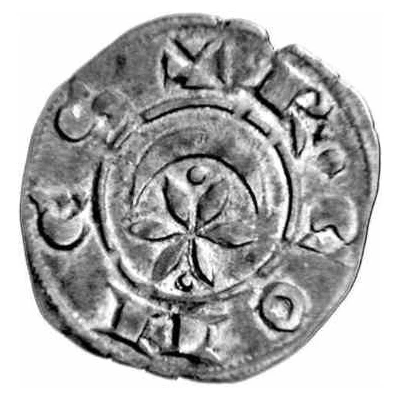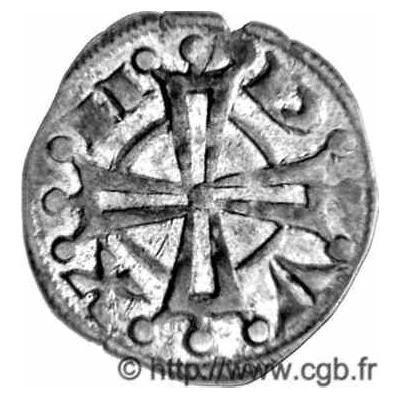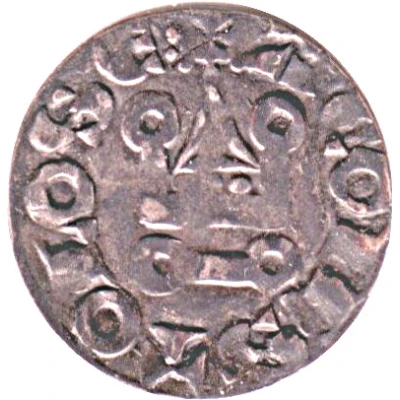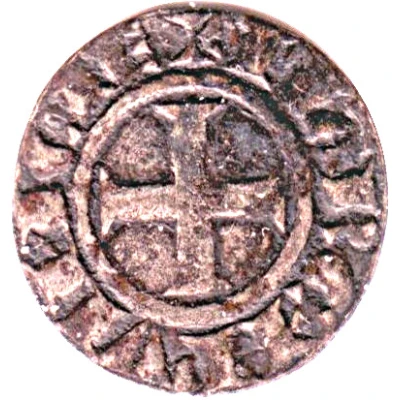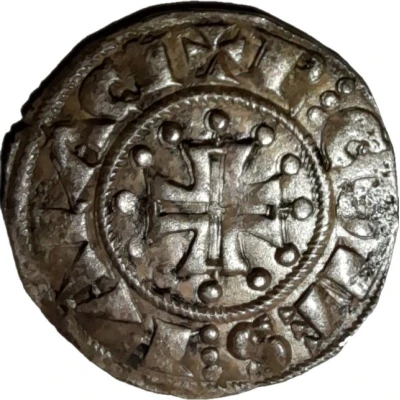
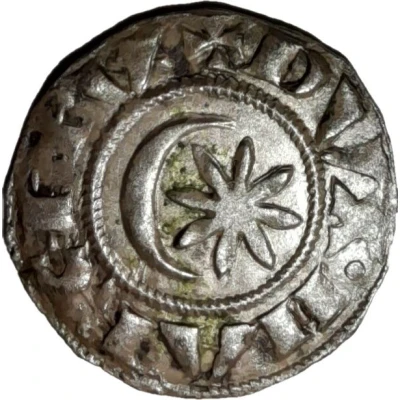

© pimmy (CC BY-NC-SA)
Denier - Raymond V or Raymond VI / Raymond VII ND
| Billon | 0.74 g | 17 mm |
| Issuer | Marquisate of Provence (French States) |
|---|---|
| Marquess | Raymond V (1148-1194) Raymond VI (1194-1222) Raymond VII (1222-1249) |
| Type | Standard circulation coin |
| Years | 1151-1249 |
| Value | 1 Denier (1⁄240) |
| Currency | Denier |
| Composition | Billon |
| Weight | 0.74 g |
| Diameter | 17 mm |
| Shape | Round (irregular) |
| Technique | Hammered |
| Orientation | Variable alignment ↺ |
| Demonetized | Yes |
| Updated | 2024-10-04 |
| Numista | N#55300 |
|---|---|
| Rarity index | 85% |
Reverse
Crescent around a sun.
Script: Latin
Lettering: ✠ DVX MARCHIO PV
Translation: Duke and Marquis of Provence.
Comment
example of + R ⋮ COMES ⋮ PALATII // + DVX · MARCHIO · PV type:The iconography is inspired by coins minted in the county of Tripoli (see example in link).
The types with the short cross are traditionally attributed to Raymond VI and Raymond VII. But this attribution is disputed by the numismatist researcher J.C. Moesgaard, on the basis of the study of deniers having been overstruck. Indeed, this researcher identified a denarius with a short cross that the coiners of the Count of Provence subsequently transformed, by over-minting it, into a royal denarius with a mitre. However, coins of the "royal miter" type were struck in the mint of the Count of Provence located in Arles between 1177 and 1185 at the latest. There were therefore already raimondins of the short cross type before 1185, which makes it necessary to reverse the chronology of the types: the raimondin with the short cross would have appeared first, then the raimondin with the long cross.
The translations of the cartulary and the charters of the Commandery of the Hospital of Saint John of Jerusalem in Avignon between 1170 and 1250, published by Claude-France Hollard (CNRS Editions, Paris, 2001) make it possible to date the appearance and the circulation of raimondins at the long cross. Indeed, the currencies most commonly used in these notarial deeds are the deniers raimondins of the marquisate of Provence, the deniers of the commune of Avignon and the deniers Melgoriens. However, we note that from July 1199 notaries expressed the price of land either in “old” sub raimondins (solidorum raimundensium veterum), or in “new” sub raimondins (solidorum raimundensium novorum). It is therefore that there were then two types of deniers raimondins in circulation in Avignon whose value was different.
On the other hand, in certain important real estate transactions, the notary even specified the relative value of new raimondins compared to the marc of fine silver, the marc of the city of Avignon being a local unit of weight which is estimated at 234 g. Thus in 1210, the marc d'argent would have been worth 90 sous raimondins new, then 85 sous in 1220, and 100 sous in 1227. In the absence of available chemical analyses, these three figures make it possible to estimate that the quality of new raimondins may have varied between 250 0/00 and 210 0/00 fine silver, if we neglect the variation in the price of silver over this period.
To this problem of dating issues, we must add a problem of locating the mint of each issue. absence of written sources, it is not possible to differentiate the types minted at Sorgues from those minted at Mornas.
According to Xavier VERGEREAU, "History of the monetary workshop of Pont-de-Sorgues".
Interesting fact
One interesting fact about this coin is that it was minted during the reign of Raymond V, VI, or VII, who were all powerful rulers of the Marquisate of Provence, a region in southeastern France. The coin's design and materials reflect the economic and political influence of the Marquisate during this time period.
